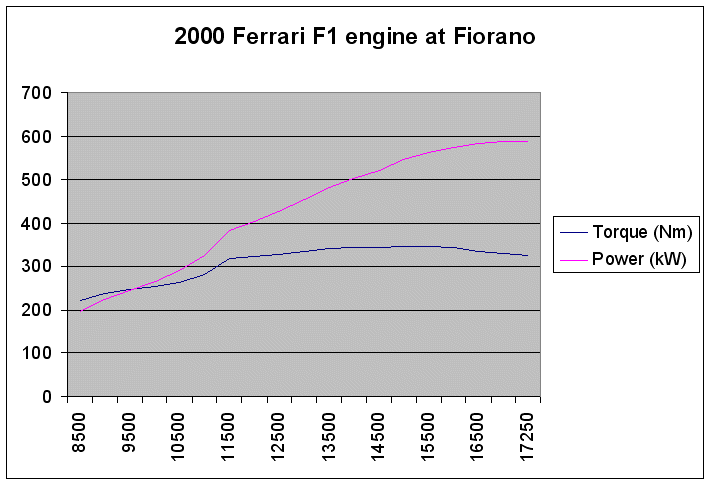The regulations state that the map must not have a gradient of less than -0.03Nm. Thus you can actually be flat to slightly negative torque for increasing RPM.
This is the important part to understand !!!
You need to understand, what negative gradient means in this context, and why it is in the regulations.
This is exactly the part, which prevents an (ab)use of creative mapping as "true" TC.
Because you would not manage, to regain traction on an wheel which lost it (as least not fast enough), if you only can reduce torque demand at -0.03 Nm/rpm.
Therefore it is not TC in the classical sense of the word.
I think "driveability aid" describes it better, you could say, that it reduces the "aggressiveness" of the torque delivery of the engine in a certain rpm range/band.
The shape of the underlying torque/power curve of the engine in questions, plays an important role in this - IMO
just an example, pulled from the web - so don't get hang up on the numbers, they are not important in this context.
The graph is just used to explain the underlying concept.

as you see, this engine has a very distinct increase in torque/power at around 11500 rpm.
If you look at the power curve gradient, you see, that the gradient changes rapidly around this value, and later the curve resumes with an lesser (flatter) gradient, similar as it does before the specific rpm range in question.
In a limited traction condition, slow corner &/or wet track, this sudden increase in torque/power delivery can be enough to break traction at the wheels (wheel spin). To recover, the driver would need to lift off the throttle, or reduce throttle (pedal) input ( and thereby torque demand) in anticipation of the torque increase in this specific rpm range.
Now lifting the throttle is not good if you want to use the exhaust gas flow for something.
If you could manage to "flatten" the torque curve in the specific range, where you have a steep increase in torque/power, the driver would be able to keep full throttle without the "fear" of loosing traction, which would lead to an more stable exhaust flow.
But even without any additional benefit from exhaust gas flow, this is still an advantage, especially in low grip (wet) condition.
IMO, this could be the underlying idea behind it - but that's just my opinion - take it or leave it.
Anyone, who has ever driven an Honda VTEC, especially in a Type-R model, or an older style turbo car in the rain,will know what I mean.


